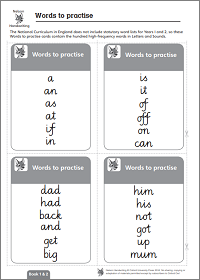Handwriting in Year 2 (age 6–7)
In Year 2, your child will learn to form letters at the right size and to join letters when appropriate. Read on to discover the National Curriculum expectations for handwriting in Year 2, and to find out how you can support your child at home.
What your child will learn
In Year 2 (age 6–7), your child will learn to:
-
- Form lowercase letters of the correct size relative to one another.
- Start using some of the diagonal and horizontal strokes needed to join.
- Letters and understand which letters, when adjacent to one another, are best left unjoined.
- Write capital letters and digits of the correct size, orientation and relationship to one another and to lowercase letters.
- Understand which letters belong to which handwriting ‘families’ (i.e. letters that are formed in similar ways).
- Use spacing between words that reflects the size of the letters.
How to help at home
There are lots of ways you can help your Year 2 child with handwriting. Here are our top ideas.
1. Create a book
Give your child the chance to make their very own book! Fold a few sheets of paper in half and staple down the length of the fold. Suggest that they fill it with their own story and pictures. It could be based on one of their favourite stories.
Alternatively, they could make a non-fiction book about something they are interested in, using photos if they don’t like drawing. If this seems daunting, suggest they make a scrap book and write labels and notes next to the things they collect.
2. Get crafty
Continue to encourage your child to draw, colour, paint, and do crafting activities at home using a range of different materials. These activities all provide opportunities to develop control, fine motor skills, and hand-eye coordination.
3. Check handwriting style
Be sure to find out what handwriting style your child is learning at school. Consistency is essential at this stage, so it is important not to correct something that you think is an error but that is actually part of the style your child is learning.
4. Make time to write
Encourage your child to keep a diary, writing a sentence or two for every day. They might feel more enthusiastic about this idea if you let them decorate and personalise a plain notebook to make it their own.
Activity: Practice tramlines

Print out these tramlines for your child to practise neat handwriting.
Activity: Words to practise in Year 2

High-frequency word flashcards for your Year 2 child to practise writing.
